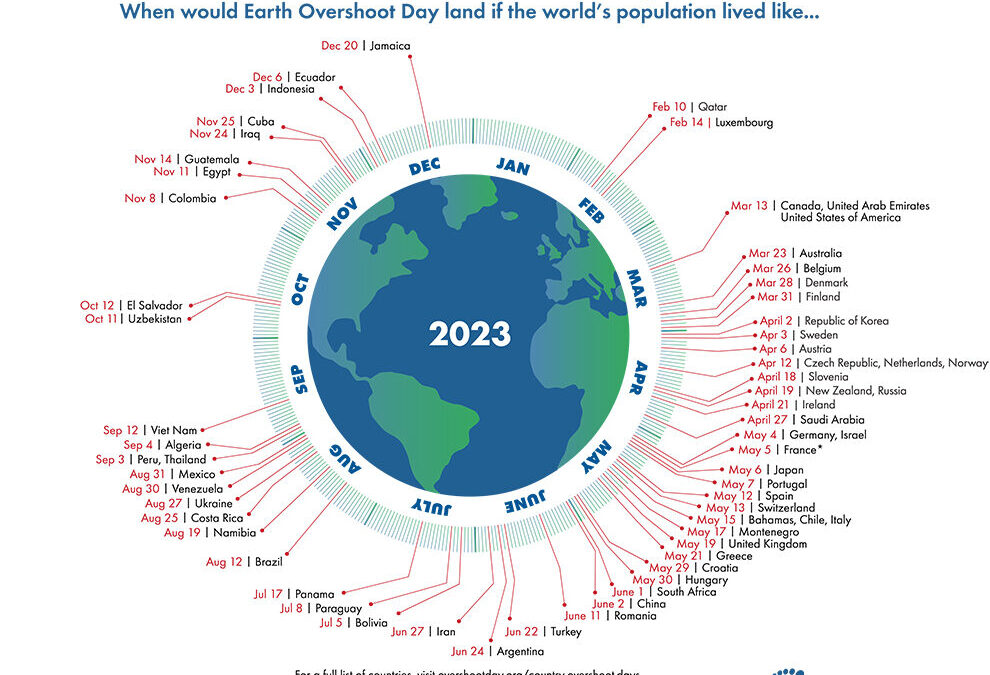Transforming Organisational Capabilities for Planetary Boundary Alignment

For hundreds of years, our business and economic systems were concerned with a very narrow set of metrics, primarily financial flows and customer data. Starting out with double-entry bookkeeping in the Middle Ages* and growing to encompass the complex web of P&L’s, cashflow projections, EBIDTA, EPS, ROE, ROI, P/E, WACC, GDP, etc., they are predominantly concerned with flows of financial capital largely ignoring the natural and other capitals that support long term value creation and fundamental biospheric stability.
Reporting requirements, whether up-to-the-minute share prices, monthly, quarterly, or annual reports, have asked a multitude of questions but in a very narrow sphere of interest which is reflected in the way our accounting systems are set up to provide information flows to support future decision-making. This has made it relatively easy for an organization to get down to an exact number of volume of materials entering their factories, the time and costs to manufacture widgets ready for market, time spent in warehouses, retail outlets, costs to make, transport, insurance and the financial investment to make all that happen.
But the flaws in this system are well known and garnering more attention as the failure to measure and manage other critical metrics has led to serious consequences for society and nature. This is creating a whole new suite of questions being asked from accounting systems that were not built to provide these insights: Where do our materials come from? Is it in an area of sensitive ecosystems? Is there modern slavery in the supply chain? Are there strong protections for the environment? What is the carbon content of extraction, manufacture, and use? What is the effect of the discharges from our factories? Does it harm human health? Are we using materials that are stocks in a linear system (fossil fuels, rare earth minerals, finite natural resources) or flows in a circular economy (sunlight, renewable/secondary materials, cradle-to-cradle products)? What are the physical and transition risks from climate change? What are our dependencies and impacts on Nature? How do we price these impacts to find a new economic equilibrium?
In the face of escalating environmental challenges and the urgent need for more sustainable development, organizations must undergo a profound transformation in core competencies to capture and leverage data to align long term value-creation, risk management and strategic capabilities with Planetary Boundary concepts coming through in new reporting requirements, e.g. Integrated Reporting, Taskforce on Climate-related Financial Disclosures (TCFD), Taskforce on Nature-related Financial Disclosures (TNFD). These scientific boundaries encompass various environmental thresholds critical for society and Earth’s stability and resilience. To navigate this complex landscape and embrace the Planetary Boundary shift requires a broader perspective.
Organizations must examine and reimagine their capabilities, leverage data and strategic planning in alignment with these boundaries. Adapting to this new normal is not only an ethical imperative but also a compelling necessity for businesses to surface and manage risks and to thrive in the long term and will require a significant change management, leadership and systems thinking endeavour. They will need to integrate environmental data such as carbon emissions, resource consumption, and ecological impact—into not just their new reporting requirements, which is largely a rearview exercise, but into forward looking decision-making processes (which ultimately inform later reports). This holistic approach demands advanced data analytics, AI-driven insights, and robust data governance frameworks to assimilate, analyse, and act upon diverse data sources.
While organisations have invested in data analytics as a way to explore customer insights, market strategies, financial opportunities – they now must apply this to a broader set of questions and recognize data as a critical asset in understanding and mitigating their impact on planetary boundaries. There are likely to be new data sources required and this will refine and coalesce over time (I’m expecting to see exponential growth of geospatial/ drone start-ups that can give granular, real-time data to inform TNFD reporting).
In the interim, we need to look at the data we already capture in our accounting systems where technologies such as artificial intelligence and machine learning can help organizations make sense of complex environmental data, enabling better informed decision-making. We need to apply existing mechanisms of naming-conventions, meta-data capture and tighter controls on volumes and descriptions so that the technologies already available are looking at better quality data inputs to derive meaningful insights out the other side.
Achieving alignment with Planetary Boundaries isn’t merely an ethical choice but a strategic imperative for long-term business viability. Redefining organizational capabilities and enabling data systems to ask different (and better) questions empowers businesses to navigate and flourish in this new paradigm. By embracing these transformative shifts, organizations can pave the way for a sustainable and resilient future, not just for themselves but for the planet as a whole.
*Jane Gleeson-Whites book Double Entry: How the Merchants of Venice created Modern Finance is a great read for fellow nerds 😊
Ready to Explore More of the power of the Planet Price Platform?
Request a demo or a Scope 3 Tread Lightly Assessment



